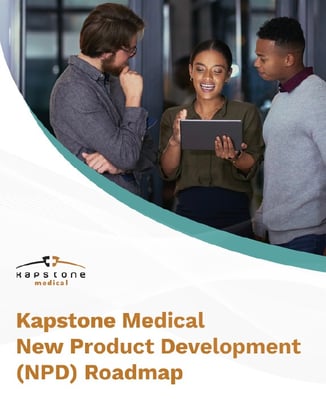As a medical device inventor, you are a natural innovator. You’ve identified an unmet clinical need from your work in a hospital, your experience as a patient, your business experience, or your engineering expertise - and you envision a better way to treat patients.
You have an idea for a device that you know could revolutionize care. But an idea, no matter how brilliant, is just the first step.
To transform your concept into a commercially successful product, you need capital. That means convincing investors your vision is a sound investment.
This is where a feasibility study becomes essential. It’s the process of building a business case that de-risks your project, reassures potential investors, and lays the foundation for success.
1. When Should You Consider a Feasibility Study?
The moment you move from "what if?" to "how do I make this happen?" it's time for a feasibility study.
This study is the evidence-based bridge between your clinical insight and a viable business plan. It demonstrates to investors that you are not just an inventor, but a serious entrepreneur.
Kapstone’s 5-phase approach to new product development begins with Phase 0 as the strategic entry point. These critical activities can often be completed with a limited cost and lead time, giving your project a head start even before you secure major funding.
2. What Are Potential Investors Looking For?
Investors want to see that you have done your homework. The purpose of Phase 0 is to mitigate risk by establishing both technical and market feasibility.
A thorough feasibility study equips you with a comprehensive report and early concept samples to strengthen your pitch. It directly answers investors' most pressing questions, like:
-
Market Need & Product Fit: Is there a real, quantifiable demand? Who will buy it, and how much would they be willing to pay for it if it made the leap to market readiness?
-
Competitive Landscape: What are the current solutions? How is your device demonstrably better, safer, or more cost-effective?
-
Technical & Manufacturing Viability: Can this device be built reliably? What are the primary technical and component sourcing risks? What will the supply chain look like? Manufacturing costs?
-
Regulatory Pathway & Timeline: What is the likely FDA classification and submission type? Identifying potential predicate devices early is crucial, as it directly drives the project timeline and budget. (See FDA's Pathway to Approval for more information.)
-
Financial Model: What is the estimated cost of goods? What is the revenue potential, and how much cash is required to ramp up?
-
Intellectual Property: Is the concept patentable and defensible? Is there freedom to operate within the existing IP landscape?
3. Key Activities to Establish Feasibility
A Phase 0 study is a collection of targeted activities. A typical report synthesizes findings from several key areas:
-
Market and Competitive Analysis: This involves Voice-of-Customer research with clinicians, industry executives, or other key opinion leaders to validate the clinical need. It also includes defining the target patient population to calculate the total addressable market and systematically analyzing competitive products.
-
Product Engineering Assessment: This evaluates whether the concept's technical features are realizable and appropriate for the relevant anatomy and physiology. It includes concept development (sketches, renderings) and identifies key technical and sourcing risks.
-
Manufacturing and Supply Chain Insight: This provides an early look at the device's supply chain, from raw materials to finished goods, identifying potential bottlenecks and cost drivers.
-
Regulatory and Quality Assessment: This provides an initial determination of the device classification, potential submission pathways (e.g., 510(k), De Novo), and an overview of quality system requirements.
-
Preliminary IP Search: A Freedom-to-Operate search is conducted to ensure your concept doesn't infringe on existing patents.
-
Proof-of-Concept Prototyping: Developing early-stage models is often the most powerful tool for demonstrating your device's core mechanism and making your idea tangible for investors.
4. How a Feasibility Study Boosts Your Chance of Success
Ultimately, a Phase 0 feasibility study is about building confidence and de-risking your product. By systematically addressing the biggest unknowns, you transform your pitch from a speculative idea into a data-driven investment opportunity.
Completing this project with Kapstone proves you are a diligent and commercially minded founder. It provides a realistic roadmap for development, a defensible budget, and credible timelines from an experienced development partner.
This clarity not only improves your likelihood of securing that crucial first round of funding but also significantly increases the long-term probability of project success.
Collaborating with Kapstone Medical
Medical device development and commercialization is a lengthy, complex, and expensive process. Collaborating with a trusted medical device development partner such as Kapstone brings new perspectives on efficiencies, along with a depth of knowledge that can only come from decades of experience in the industry.
As a single-source solution for taking medical devices from concept through commercialization, Kapstone is the go-to for comprehensive strategies and solutions. Learn more in the Kapstone Medical New Product Development (NPD) Roadmap. Click below to download your copy of this valuable resource.




